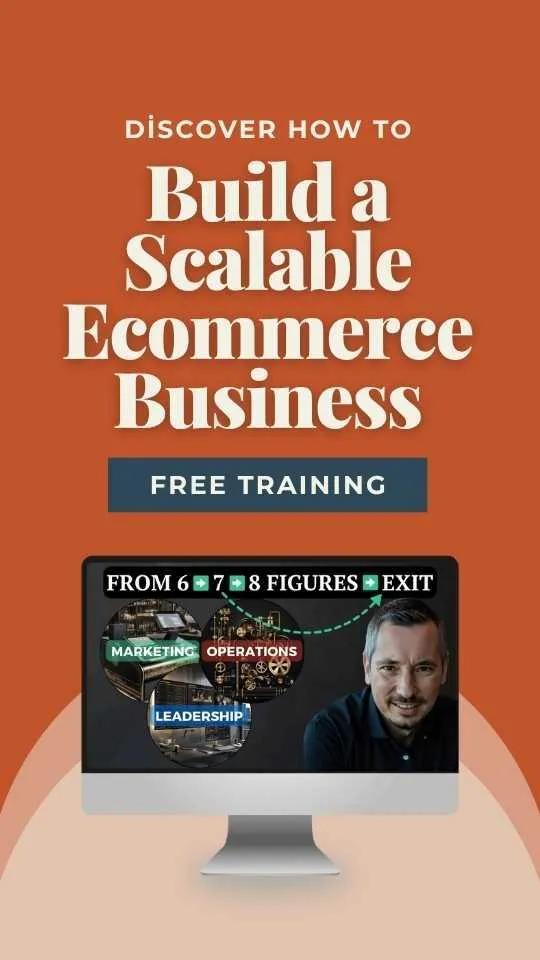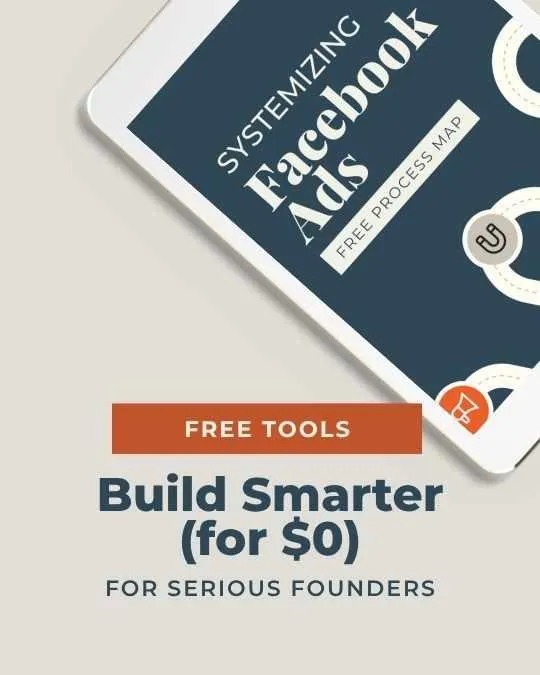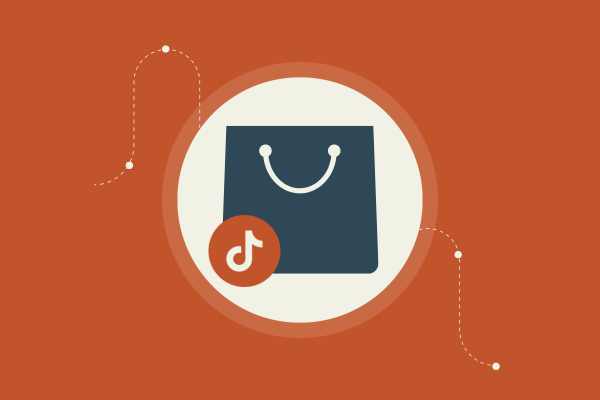How Do eCommerce Businesses Really Make Money? Secrets Unlocked!
Wondering how eCommerce businesses actually make money? Well, let's dive right into it. In the world of eCommerce, you need a solid plan to grow your bank account. Selling products online starts with finding what people want and making sure your store can deliver it efficiently. It's about making the buying process smooth and making your shop irresistible.
The key to making your eCommerce journey profitable lies in smart marketing. You need to get your products in front of the right audience. Think about using social media, email campaigns, and search engine optimization to grab attention. At the same time, make sure your sales and fulfillment process is smooth to keep customers happy and coming back.
Profits can soar when you focus on innovation and scaling your business. From unique strategies like drop shipping to leveraging data for better decisions, there are countless ways to boost your bottom line. Keep things fresh, adapt to trends, and watch your business grow.
Key Takeaways
Choose the right products and make purchasing easy.
Effective marketing attracts the right audience.
Innovate and scale for better profits.
Understanding eCommerce
eCommerce is a huge market, changing how we shop. Different models make up this online world, giving businesses ways to connect with customers and sell products. Let's dive in.
What Is eCommerce?
eCommerce is how you buy and sell stuff online. It's everything from grocery stores to tech gadgets, and it's all happening on the web. An ecommerce platform is the software where all this magic takes place, like Shopify or Amazon.
You might think of eCommerce as just online shopping, but there's more. It's about using the internet to offer services, book travel, or even sell digital products like ebooks and courses. It's all about connecting buyers and sellers in a digital world.
Types of eCommerce Models
When we talk about eCommerce models, we're talking about how businesses are set up to sell. One key model is Direct to Consumer (D2C). Here, businesses sell straight to you, no middlemen involved. Think about brands like Nike selling directly from their website.
Another model is Business to Business (B2B). In this one, companies sell to other businesses. Then there’s Consumer to Consumer (C2C) where individuals sell to each other, like eBay.
These models shape how eCommerce businesses operate, how they reach you, and how they make money online. It's all about finding what works best in a digital world.
Setting Up Shop
To make money with an eCommerce business, there's a lot to think about. First, you need to find the right niche and then build a killer online store. Don't forget to map out a solid business plan to keep you on track. Let's dive in!
Choosing Your Niche
Picking the right niche is where it all begins. You want to target a market that excites you but also has enough demand. Think about your interests, but more importantly, think about your potential customers. What are they looking for? Research tools like Google Trends or Market Intelligence platforms can be a goldmine for data.
Check out the competition. Places like Shopify and BigCommerce offer insights into popular products. Analyze competitors in your niche and see what's working for them. Don't copy them—improve on what they do. Find a unique angle that makes you different. Your niche isn't just a product; it's a chance to stand out.
Building Your Online Store
Once you’ve nailed down a niche, it’s time to build your online store. Platforms like Shopify and BigCommerce make it straightforward. They offer tons of templates and tools to customize your storefront even if you're not a tech wizard. Your store needs to be visually appealing and easy to navigate.
Pages should load fast, and the checkout process should be smooth as butter. High-quality images and product descriptions are critical. Make your site mobile-friendly, too. Many people shop on their phones, so don’t lose out. Get SEO right to attract your target audience. Keywords related to your niche should be used wisely.
Crafting Your Business Plan
A strong business plan is more than just a formality—it's your roadmap. Start with your business goals. What do you want to achieve? Detail your target audience and how you plan to reach them. Knowing your customers inside out is crucial.
Break down your marketing strategies. Are you going to use social media ads, influencers, or email marketing? Outline costs, from product sourcing to advertising. Understanding the numbers is what separates successful entrepreneurs from the rest. Regularly update your plan as you learn and grow. It's a living document, not a one-and-done deal.
Making Money
To really make money in eCommerce, you have to focus on not just how much you sell but how you manage your profits and cash flow. It's about having diverse revenue streams and making the most from affiliate marketing and commissions. Here’s how you can get started.
Profit Margins and Cash Flow
Profit margins keep your business thriving. Without solid margins, you're just spinning wheels. Say you're into print-on-demand; you should know that margins might be between 15% to 60% depending on your efficiency. Balance your costs and pricing smartly, so you’re not scraping by.
Cash flow is the lifeblood. Even with high sales, lousy cash flow can choke your business. Manage incoming and outgoing funds by keeping a close eye on your books. Plan for slow months and set aside reserves to cover lean times.
Good cash flow means you can invest in more stock, marketing, or whatever you need to grow and expand. Keep the money machine running smoothly. Simple as that.
Diverse Revenue Streams
You don’t want all your eggs in one basket. Use different channels. Sell on multiple platforms because that boosts your sales. Multichannel marketing can increase your revenue by up to 190% with three channels. Use eBay, Amazon, your own site. Blend them all.
Beyond product sales, think subscriptions. Offer monthly boxes, special memberships, or premium content. Each stream adds stability and increases your profit chances when one channel slows down.
Don’t forget upselling. When a customer buys, suggest related items. This boosts revenue without the extra cost of finding new customers. That's how you edge out the competition.
Affiliate Marketing and Commissions
Affiliate marketing is another money-spinner. Sign up for programs where you promote products and earn commissions. It's about the right match between products and your audience. If it clicks, you see steady, passive income. Not a bad deal, huh?
Collaborate with influencers. They share your products and bring in their fan base. You pay them a cut, which is a win-win for everyone. Make smart partnerships with those who truly resonate with your brand.
Leverage customer loyalty. Encourage referrals and pay out commissions for every new customer they bring. It's cheaper than traditional ads and builds a strong community around your business. Jump on it!
Marketing Essentials
To rake in profits with eCommerce, you need a killer marketing strategy. It's all about using SEO, killer content, social media, and email marketing. This combo is what pumps up your sales game. Let's dig into making it happen.
Crafting a Solid Marketing Strategy
You can't wing it. You need a rock-solid marketing strategy. Start with defining your brand's voice and target customer. Know their likes, dislikes, and shopping habits. This is crucial.
Lay down clear goals. Want more website visits? More sales? More followers? Decide and plan. Each goal needs a path, like using different marketing channels.
Keep testing. What works today might not work tomorrow. Adapt and tweak your tactics as needed.
Utilizing SEO and Content Marketing
SEO is your ticket to visibility. Use keywords to get your business noticed on search engines. Think of it as your online footprint. Use search engine optimization tools to find the best keywords. They lead customers to your digital doorstep.
Next, content marketing. Create engaging blogs, videos, and infographics. Give value to your audience. Content is king, and it builds trust. Keep it fresh and relevant. Make sure it aligns with your brand’s message.
Leveraging Social Media and Email Marketing
Social media is where your audience hangs out. Platforms like Facebook and Instagram are gold mines for engagement. Run targeted Facebook ads. They are cost-effective and reach the right crowd.
Don't sleep on email marketing. It’s the secret weapon. Build a list and send them personalized offers and updates. Email keeps your brand in your customer’s mind.
Balance is key. Use both social media and email marketing to create a loop of communication and interaction.
Sales and Fulfillment
Running an eCommerce business means mastering the art of sales and the science of fulfillment. To thrive, you need smart order processing, a knack for boosting purchase values, and a commitment to retaining your customers.
Order Processing and Fulfillment Strategies
You need a smooth operation from order to delivery. Coordinating fulfillment across different sales channels like Shopify or Amazon can be a challenge. Each platform has its own rules. Automation helps by setting proper prices and managing inventory efficiently. You save time, cut errors, and keep customers happy. Check out these fulfillment tips for more guidance.
Consider outsourcing through networks like Fulfillment by Amazon (FBA) to leverage their logistics. This reduces shipping hassles, ensuring products arrive on time. On the other hand, handling fulfillment yourself gives you control over the packaging and delivery experience.
Increasing Average Order Value
Increasing average order value is key. Create product bundles or offer discounts on complementary items to entice buyers to spend more. Implement upselling during the checkout process. Suggest relevant products that enhance their original purchase.
Free shipping thresholds also encourage customers to add more to their cart. For example, “Spend $50, get free shipping!” It works!
Remember, it's not just about persuading customers to buy more—it's about adding value to their purchase. Create offerings that make sense and truly benefit the customer’s needs.
Customer Retention and Brand Loyalty
Customer retention is critical. A returning customer is worth much more than a one-time buyer. Focus on excellent customer service to build trust. Respond fast to inquiries and resolve issues quickly. Collect feedback and show you listen.
Build brand loyalty with rewards programs or exclusive deals for repeat customers. Keep in touch through mailers or social media updates about your latest offerings. You want them to remember your brand fondly.
Personalize the shopping experience by recommending products based on their past behaviors. Create a community and give them reasons to keep coming back.
Innovative Business Practices
Want to know how eCommerce businesses really make money? It's all about using smart practices. Dive into strategies like dropshipping, private labeling, subscriptions, and digital products for cutting-edge ways to boost your profits.
Dropshipping and Print-on-Demand
Here’s the deal with dropshipping. You sell products online without holding any inventory. Customers order, you pass the details to a supplier, and they ship it directly. Less hassle, more sales. That's the beauty of dropshipping.
Print-on-demand is similar but with a twist. You create custom designs, slap them on T-shirts, mugs, or whatever, and sell them under your brand. When someone buys, the item gets printed and shipped. Simple, creative, and low risk.
Both options save you money on storage and production. Plus, you can test products without a big financial risk. And let's be honest, that's what makes it exciting. It's flexible and scalable.
Private Labeling and White Labeling
Private labeling is all about selling products as your brand. You find a manufacturer, tweak their designs, maybe change the packaging, and boom, it’s got your name on it. This offers control over pricing and brand identity. It's like being a secret boss.
White labeling is a bit different. It’s when you take a product and sell it as your own without changing anything. More straightforward, less customization, but faster to market.
Both these practices let you leverage existing products while creating something that feels unique to your brand. It's about recognition and loyalty, and maximizing profit margins.
Subscription Models and Digital Products
Subscriptions are gold. They get you recurring revenue. Think of it like this: you sell a box of goodies every month, or regular access to a service. Customers love convenience; you’ll love the predictability in income.
Then, you have digital products. Ebooks and online courses are great examples. No shipping, low production costs, and everybody’s buying knowledge these days. Sell once, profit forever.
Combining subscriptions with digital content? Genius. It’s scalable and efficient. The more valuable content you offer, the more sign-ups you get. It’s about giving customers what they need while building a steady cash flow.
Scaling Your eCommerce Business
Ready to scale your eCommerce business? Focus on expanding your market reach, strategic analysis, and leveraging influencer marketing for brand building. These tactics will help you boost profitability and conversion rates.
Expanding Market Reach
To grow, you need to reach more customers. Start by conducting thorough market research. This means understanding your customers' needs and behaviors. It helps in crafting the right branding message.
Get your products where they need to be. Consider partnering with eCommerce platforms like Amazon or Etsy. They have a massive audience waiting for you. Building an international presence? Look into translation services and local currency options.
Don't forget social media. Tap into networks where your audience hangs out. Run targeted ads to reach new customers. With a precise strategy, you'll see your customer base grow and profits soar.
Strategic Analysis and Reselling
Understanding your market is key. Dive deep into data to find out what's selling and what's not. Use this insight to pivot and optimize your offerings.
Consider the reselling model. Buy popular items in bulk, then sell them at a margin. Keen strategic analysis is required to get it right. Spot trends early and capitalize on them.
Always track your conversion rate. Know which strategies are driving sales. Adjust when necessary. This kind of adaptability is what keeps your business thriving while others fizzle out.
Influencer Marketing and Brand Building
Influencers can supercharge your brand. Partner with personalities who align with your values. This is crucial for authentic promotion. When influencers vouch for your products, their audience listens.
Boost your branding by telling a compelling story. Influencers help share your message more widely. Authentic storytelling builds trust.
Set clear goals for your campaigns. Are you looking to boost your conversion rate or enhance brand visibility? Measure results to see what works.
Leverage these partnerships to reach new customers. Brand building isn't just about sales today; it’s about creating a loyal customer base for tomorrow. Keep your focus sharp, and your business will see serious gains.
Behind the Scenes
Running an eCommerce business isn't just about setting up a website and selling products. You need to consider the initial investment, monitor your profits, and master logistics like a pro.
Startup Costs and Funding
Starting costs can be a big hurdle. You’ll shell out cash for domain registration, hosting, and platform subscriptions. Legal fees like business licenses can add up too. Don’t forget inventory costs.
Think about funding sources—self-funding, crowdfunding, or getting a loan. Each has its pros and cons. Retail arbitrage and wholesaling are options to lower inventory costs.
With wholesaling, you buy in bulk to save money. Retail arbitrage lets you flip products from physical stores at a profit online.
Key Metrics and ROI Analysis
Knowing your numbers is crucial. Keep an eye on conversion rates, customer acquisition costs, and customer lifetime value. These metrics tell you about your business health.
Return on investment (ROI) is key to understanding your profit margins. If you spend $1,000 on ads but make $5,000 in sales, your ROI is solid.
Track these metrics consistently to avoid surprises and plan for growth. Make sure your eCommerce strategy aligns with your financial goals.
Logistics and Product Photography
Great logistics can make or break your store. Efficient shipping keeps customers happy.
Fast delivery can turn a one-time buyer into a loyal fan. Partnering with reliable carriers is a smart move.
Product photography is your silent sales pitch. High-quality photos showcase your product details and build trust.
Use good lighting and angles to make your products pop off the page. Poor photos can mean lost sales.
Aim for a low return rate with accurate and captivating images.







